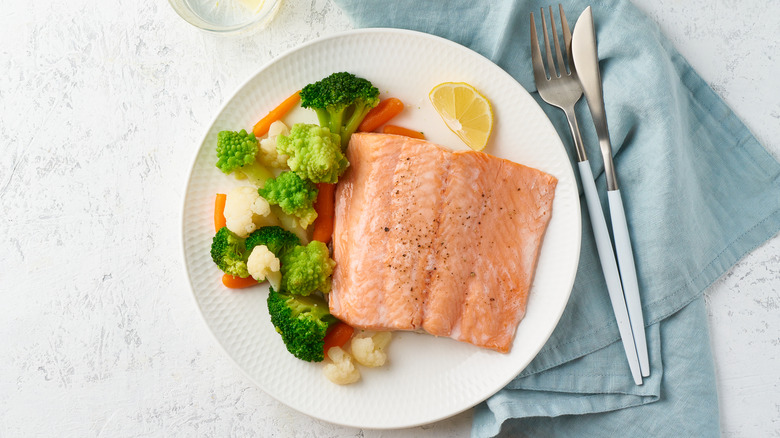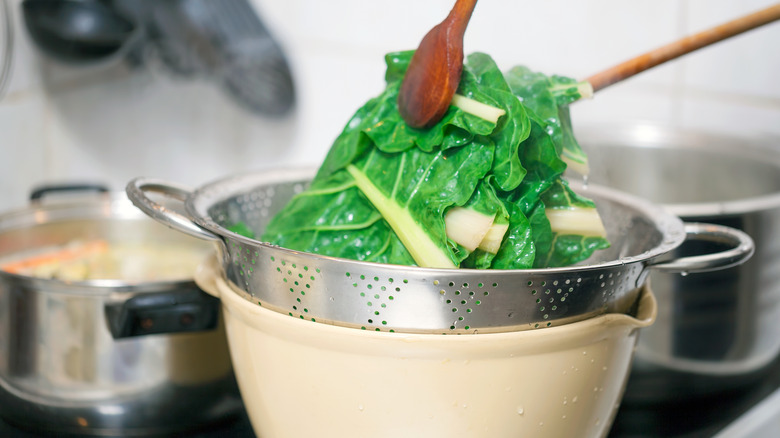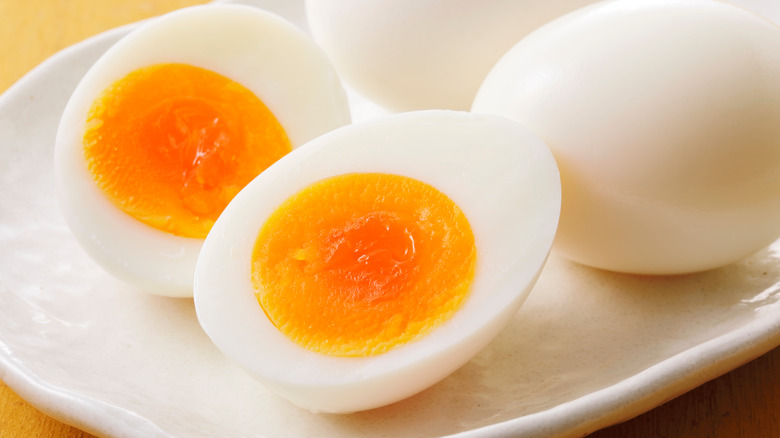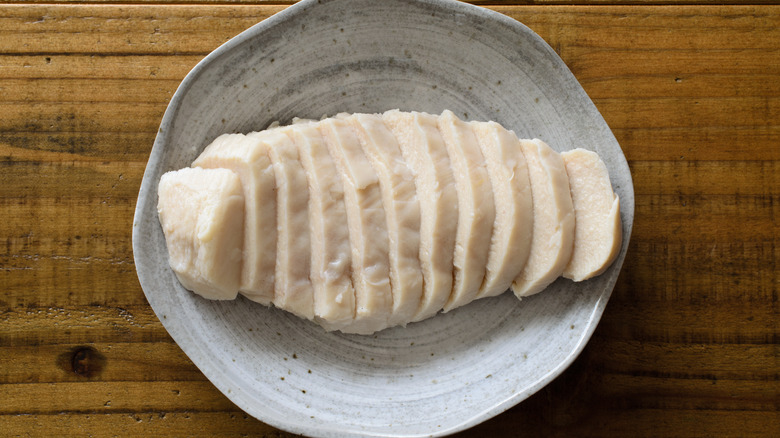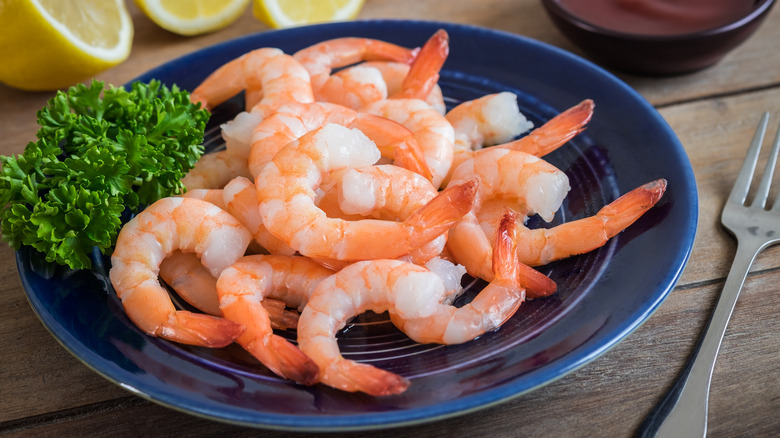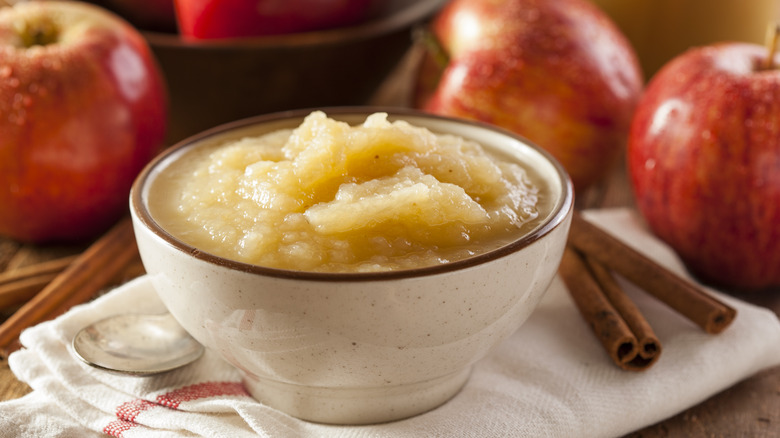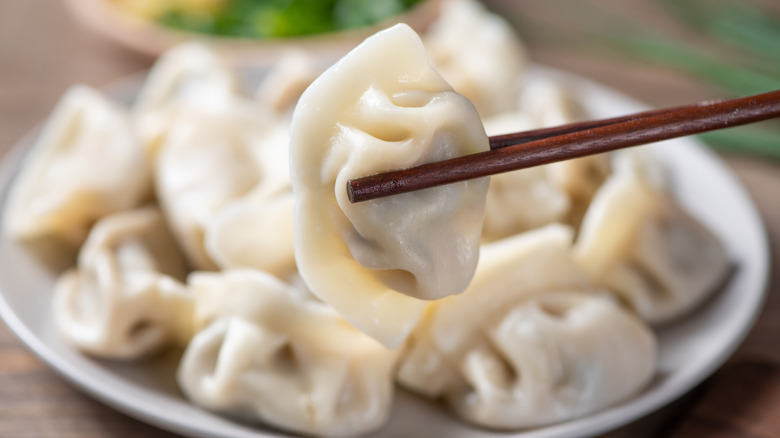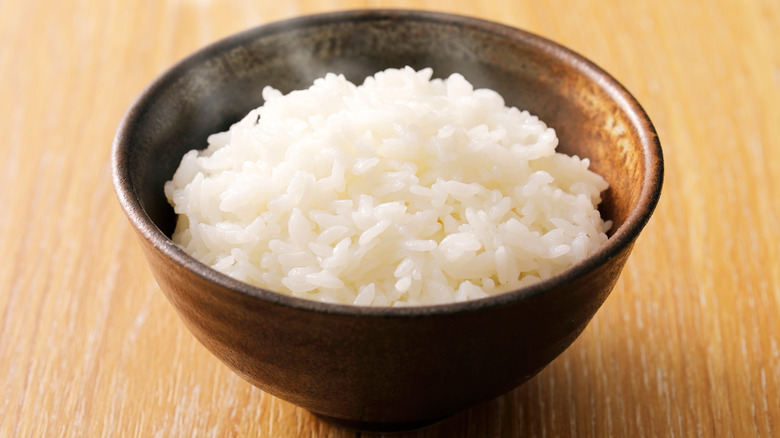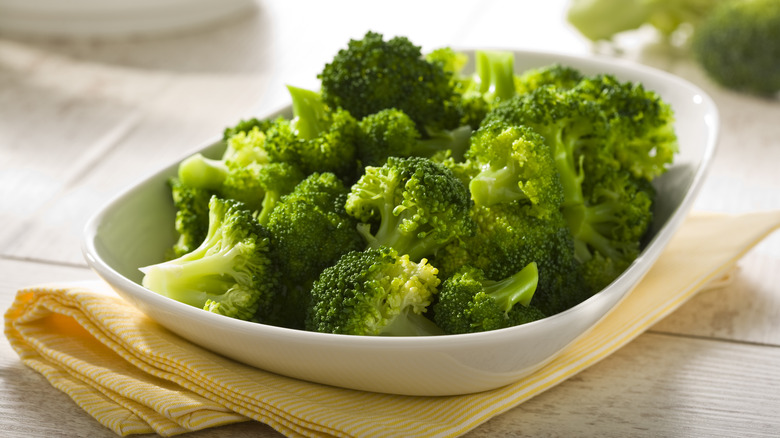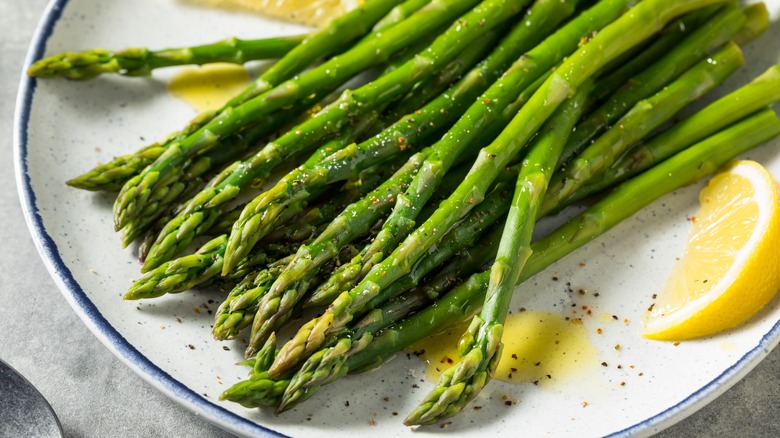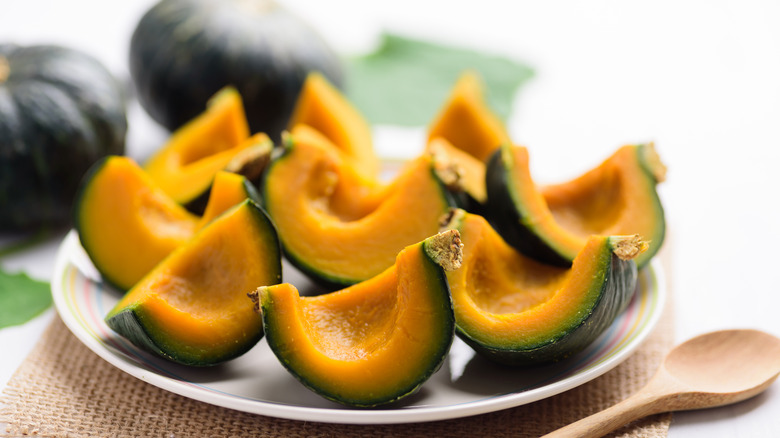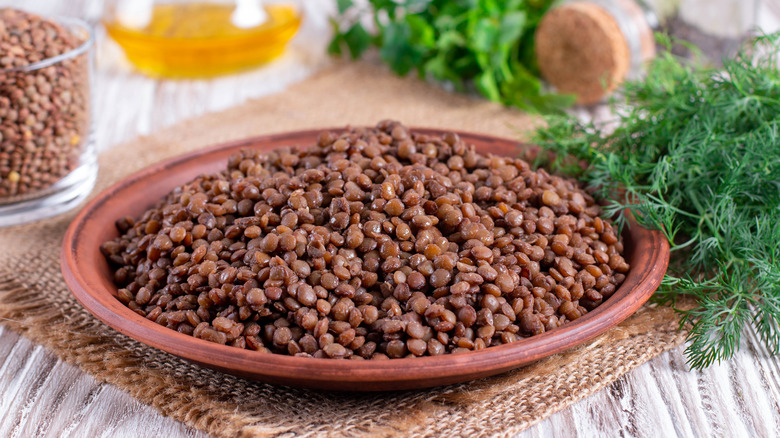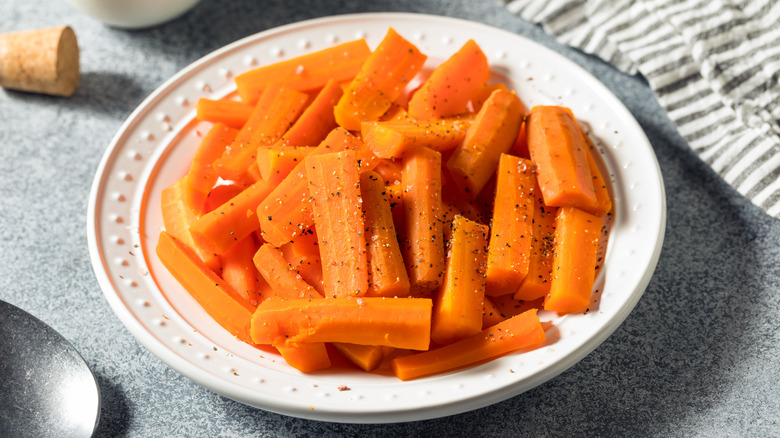12 Foods You Should Be Steaming
Whether you're looking to eat a bit healthier or are simply eager to play around with new recipes, steam cooking is a great method to incorporate into your kitchen. From melt-in-your-mouth fish filets to tender, lemony leafy greens, you should be steaming plenty of foods to amp up their available nutrients.
Because steaming eliminates the need for added fats or grease, it not only gives your cholesterol a break but also allows the food to cook in its juices that have evaporated into the steam, helping retain its natural flavor.
In many conventional cooking methods, vitamins and minerals — such as vitamins C and B, calcium, and magnesium — are lost or significantly reduced. Steaming, however, provides a way to cook healthy foods and capitalize on their nutrients, leaving nothing to waste. Steaming is more than a healthy cooking mode; it's also convenient, leaving you with tasty, hearty meals, minus all the clean-up that often comes with grease. So, without further adieu, here are the foods you should be steaming for flavorful, nutrient-dense meals.
1. Leafy greens
We all know how vital leafy greens are to a healthy diet. As Popeye says, "I'm strong to the finich 'cause I eats me spinach!" But sometimes, they just need a little oomph to take them from crunchy and earthy to tender and savory, and steaming does just the trick. Whether you're working with kale, collard greens, spinach, or Swiss chard, steaming is the perfect way to curb their bitterness while preserving their abundant minerals and nutrients.
That said, one of the most common pitfalls of steaming leafy greens is oversteaming them. Delicate greens like spinach can become a mushy mess if steamed for too long, while firmer greens like kale can wind up a bit chewy. To avoid this, be sure to steam your greens according to their texture: softer greens like spinach do better on low steam, while kale and collards take on a better texture and taste when steamed over higher heat. Don't forget to monitor your greens as they are steaming — you're looking for fork-tender greens that are vibrant in color.
Start by bringing a pot of water to a boil while rinsing the greens. Once the water is boiling, add them to a steam basket and allow them to sit over boiling water for around two to five minutes. Sometimes just a squeeze of lemon and salt will do the trick, but if you're looking to elevate your steamed greens to supper party status, opt for this buttery, hearty Southern collard greens recipe.
2. Eggs
One thing for certain: people love eggs. But despite such a fondness for this food, many people miss out on their full potential by never steaming them. Steaming eggs is a brilliant way to be sure your breakfast doesn't wind up overdone. Whether you prefer your eggs scrambled or hard-boiled — the latter which leaves you with a soft, easy-to-peel shell — both can be steamed.
To hard-boil, erm, hard-steam eggs, simply add them to a steaming basket and place it over a pot of boiling water. Cover the pot and set a timer for your preferred doneness — that will be about 6 minutes for a soft, creamy yolk or between 12-15 minutes for a firm, pale yoke — et voila!
Prefer your eggs scrambled? It's a tad more effort but still yields superior results and isn't limited to the stovetop. To steam scrambled eggs, begin by whisking together the eggs and any additional ingredients, such as a splash of milk or dash of salt, then gently pour the mixture into a heat-safe bowl, such as a ramekin.
Next, you can opt for the stovetop or even the microwave. To steam your scrambled eggs on the stovetop, place the bowl into your steaming basket and pot of boiling water before cooking for 10 minutes on medium heat. If you prefer the microwave method, simply cover the bowl with a plate or heat-safe lid and microwave for 4 minutes.
3. Chicken
Dry, bland chicken be gone! With so many different ways to cook chicken, grilling, frying, and baking normally get the spotlight, while steaming is left on the back burner. (See what we did there?) Steaming your chicken helps retain nutrients and makes for juicy, tender protein, perfect for salads, pasta, stir-fries, and more.
It's as easy as it is delicious, too — start by placing a steamer basket in a medium to a large-sized pot of boiling water. Then, season the chicken with your choice of spices or herbs before placing it in the basket and covering the pot. After around 10 to 12 minutes, your chicken should be cooked through and read an internal temperature of 165 degrees Fahrenheit.
Once your chicken is finished steaming, you can incorporate it into any number of things, from hearty soups to Super Bowl-worthy buffalo chicken dip. We recommend shredding the chicken and smothering it in a tasty sauce for a taco filling. By the way, did you hear that the best way to shred chicken is by hand and not fork?
4. Seafood
From salmon to scallops, seafood is a delicate thing in the kitchen. Steaming seafood allows it to cook gently in its aroma, preserving its fragile texture and locking in its fresh flavors. Whether you're aiming for delectably soft salmon, perfectly juicy lobster, or a full-blown ocean medley, steaming is guaranteed to take your meal next level.
The most obvious health benefit of steaming seafood is that you do not need added oils or fats that will alter the already subtle and mild flavor of seafood. However, steaming also goes beyond omitting fats — it helps retain much of the seafood's nutritional value, such as omega-3 fatty acids.
Not only is steamed seafood incredibly healthy, but it's also versatile. Toss steamed shrimp in a garlicky butter sauce, give a good lemon squeeze to steamed scallops for the perfect appetizer, or elevate your dinner with citrus and dill steamed salmon. Looking to put together the perfect date night? Go for this steamed black cod recipe that comes together with sweet potatoes, leafy greens, and a generous helping of ginger and garlic.
5. Apples
It's true — the humble apple's appeal goes way beyond pie and cider. As one of few fruits that can be steamed, apples make a flavorful (and nutritious!) addition to cinnamon oatmeal or a big bowl of vanilla ice cream. Steamed apples are also an excellent base for homemade applesauce and a convenient filling for turnovers.
Give your apples a good scrub before slicing them and placing them into a steamer bowl over a pot of boiling water. After five to seven minutes, check that the tenderness to mushy ratio is to your liking, and you're good to go. Steaming apples is so quick and easy that the only thing to worry about is which type of apple to use. It sounds like an easy enough choice, but with so many options — sweet Honey Crisp, sour Granny Smith, classic McIntosh — it can be trickier than you think.
When steaming apples, you'll want to consider the natural sweetness and crispness of the apple and how it will affect the result post-steaming. For example, Granny Smiths are naturally tart and firm, meaning they can withstand steaming without becoming too mushy. This will leave you with skin that is still slightly crisp, while the apple's interior will take on a smooth and creamy texture. Likewise, Cortland apples are sweeter and much less dense, allowing them to break down easier while steaming and resulting in a tender apple perfect on its own or as an applesauce base.
6. Dumplings
Fry 'em, boil 'em, steam 'em; the love of dumplings is universal. Steaming dumplings help retain their original shape, preserving the delicate folds and seals that tie these delicious flavor bombs together. Because steaming the dumplings keeps them from bobbing around in a restless pot of water or searing holes in the dough on a skillet, the dumpling skin winds up silky yet firm.
Start by lining your steaming bowl with parchment paper, making sure to poke little holes throughout for the trapped steam in the pot. Once you've lined your bowl, add the dumplings in a single layer before placing the bowl over a pot of boiling water. Cover and cook for 10-15 minutes, taking care to note internal temperatures for raw meat.
If you're pressed for time, you can steam frozen dumplings — just double-check the recommended steaming time on the package instructions. Otherwise, why not get crafty in the kitchen and make them from scratch with this delicious steamed beef dumpling recipe?
7. Rice
Ah, rice: the humble grain loved 'round the world. From basmati to jasmine, rice is a versatile side dish that amps up any meal. While it can be prepared a number of ways, rice is one of the foods you should be steaming whether you're hungry for a saucy side or a hearty main. And the best part? You don't actually need a rice cooker. All of the magic can happen right on your stovetop.
Start by rinsing your rice of choice until the water runs clear. Grab a pot and fill it with water according to your rice choice. A good rule of thumb is a 2-to-1 water-to-rice ratio, which works for steaming long-grain white rice, basmati, and jasmine. Other types of rice, such as short-grain Japanese sushi rice, require closer to a 1.75-to-1 water-to-rice ratio. Once your water is boiling, pour in your rice and any preferred seasonings. If you're working with white rice, there are a myriad of different ways to dress it up, from savory chicken broth to zingy citrus. Place a lid on the pot and allow it to cook in the trapped steam for 18-20 minutes. Afterward, remove the pot from heat and allow the rice to rest for another five minutes before fluffing it with a fork.
8. Broccoli
Two words: emerald green. That's the color broccoli turns when steamed, but if the vibrant color splash on your plate isn't appealing enough, steamed broccoli is also incredibly healthy and delicious. In fact, according to a study in Nutrition Research, steaming is one of the best methods to cook broccoli as it helps preserve its natural nutritional content. High in iron, vitamin C, antioxidants, and fiber, steamed broccoli is great for those looking to up their nutrition levels and eat more consciously.
Start by trimming your broccoli into bite-sized pieces and bring a pot of water to a boil. Once the water is boiling, add your florets to a steaming basket to rest in your pot of water and allow it to steam for five to seven minutes depending on your preferred texture. You can season and serve this healthy dish in a variety of ways, but keep it deliciously simple with this easy steamed broccoli recipe with a squeeze of lemon and splash of olive oil.
9. Asparagus
Contrary to popular belief, asparagus doesn't just have to be roasted. It's also a food you should be steaming to really retain the boldness of its flavor and texture that's often lost in the oven. Steamed asparagus also makes a great addition to quiches and juicy meat dishes — roasted pomegranate chicken, anyone?
Start by trimming the asparagus spears to your preferred size and give them a good scrub to remove any excess dirt caught in the folds. Add your chopped spears to a steaming basket and place it over a pot of boiling water. Aim for about five to seven minutes if you want them to keep their shape but gain a soft texture.
Like broccoli, a little bit of lemon, olive oil, and salt can go a long way. Zing it up with these three and enjoy your healthy greens as a side or add them to pastas, salads, or stir fries.
10. Pumpkin
Don't limit your pump-consumption to an annual slice of pumpkin pie at Thanksgiving. This vibrant, versatile fruit (it's true, pumpkins are technically a fruit) goes way beyond the tasty holiday treat and makes an excellent addition to all sorts of dishes from curries to casseroles, or can simply be enjoyed by itself. Rich in vitamins A and C, potassium, and fiber, it never hurts to have a little more pumpkin in your diet. Steaming a pumpkin may be a bit intimidating at first, but once you master the technique, you'll be leaving Libby's cans in the rearview.
Start by slicing the top off of your pumpkin and then cut the remainder in half; you can leave the skin on or peel it based on your preference. Scoop out the seeds and slice the pumpkin into chunks appropriately sized for your steaming basket before steaming over a pot of boiling water for 10-15 minutes. The texture is up to you, but you'll want to make sure that the pumpkin winds up fork-tender.
11. Lentils
These nutrient-dense legumes are the perfect addition to your steam-cooking arsenal — they're flavorful, make for a great meat substitute, and can be dressed up or down in whatever way you prefer. Not only do lentils contain plenty of healthy vitamins and minerals such as magnesium, iron, and folate, but they are also extremely versatile as a steamed dish. Brown, red, yellow, orange, green—there are plenty of different types of lentils to choose from—though we think the most versatile are brown as they hold their shape, have a mild flavor, and are generally more affordable.
Start by rinsing your lentils and allowing them to soak in a bowl of water for 20-30 minutes. Afterward, add them to your steam basket and pot of boiling water, allowing them to steam for 20-25 minutes until they reach your desired tenderness. Once they're finished steaming, incorporate them into your favorite meal. Add them to pasta, use them as a base for a vegan sloppy joe, or toss them into your favorite salad for extra protein.
12. Carrots
Carrots have a reputation for being mega-healthy, and it's well deserved. Loaded with fiber, beta carotene, antioxidants, and vitamin A and C, it's never a bad idea to try to fit more carrots into your diet. Steaming carrots is a great way to prepare them as the gentle cooking process helps retain their healthy goodness without the need for added fats or oils, and prevents them from drying out in the oven or frying pan.
First, peel your carrots and chop them into bite-size pieces. Prepare your pot of boiling water and steaming basket, then allow the carrots to steam for around five minutes, et voila! Steamed carrots that will add an extra punch of nutrition to any meal. While you can toss them in a stir fry or season to your liking for a side, this 1970s classic copper penny carrots recipe (say that five times fast!) is sure to please.
